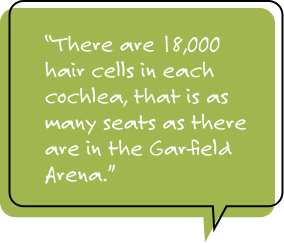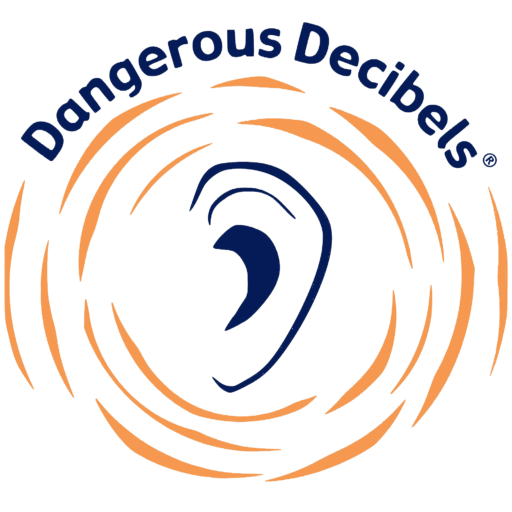Dangerous Decibels Program Walk-Through: 4. How Do We Damage Our Hearing?
4How Do We Damage Our Hearing?

In this Dangerous Decibels program module, you are helping the students build a model using pipe cleaners and displaying images to show how a powerful sound can break a hair cell and cause hearing loss and tinnitus.
This Dangerous Decibels program module requires you to tell a “story” about an imaginary day. The activities described reflect different levels of sound that someone might hear during the day and how these sound levels interact with the hair bundles on the hair cells.
The Dangerous Decibels educator is key to making this activity work and connecting all the parts of the story to the pipe cleaner activity. It is also one of the most powerful demonstrations within the program, and this activity makes a strong impression on the students that can last for years.
The first step in this module is to show the picture of the hair cell and differentiate the hair bundle. This is the first time the students see the actual picture of a hair cell (hair cell body and hair bundle), so remind them that there are 18,000 of these tiny sensors in each ear and they must last a lifetime since we cannot fix them with medicine or surgery after they are damaged.
Some students do not have a good understanding of the number 18,000. So, if there is a local arena or stadium near you that has about 18,000 seats, you might be able to draw an analogy between the number of hair cells in a single cochlea (18,000) or both cochleae (36,000) and the number of seats in the arena. For example:

4. How Do We Damage Our Hearing?
Please watch this clip about how we damage our hearing.
